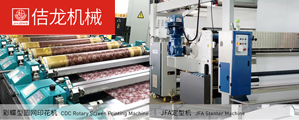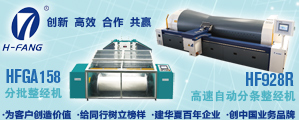Analysis on the operation of the textile and apparel specialized market in 2020
Mar 04, 2021 | by Zhao Xinhua

In 2020, the COVID-19 had a profound impact on the textile and apparel industry. China’s textile and apparel specialized market has overcome difficulties and achieved growth. In the first half of the year, affected by the pandemic, market turnover dropped significantly year-on-year. With the stable control of the pandemic and online innovation attempts in the specialized markets, the growth rate of single-quarter turnover in the third quarter has changed from negative to positive, and the good trend of the peak sales season continued in the fourth quarter, and continued to promote the integration of online and offline development mode, market transactions are progressing steadily.
1. Overall operation of the specialized markets in January-December 2020
From January to December, the 46 textile and apparel specialized markets (including market groups) monitored by the China Commercial Circulation Association of Textile and Apparel (CATA) had a total turnover of 1,347.783 billion yuan, a year-on-year increase of 4.93 percent. Among them, the turnover of 35 markets fell year-on-year with an average decrease of 15.32 percent; the turnover of 10 markets increased year-on-year with an average increase of 20.50 percent; and the turnover of one market was the same as in 2019.
1.1 Analysis on market operation efficiency
From the perspective of market operating efficiency, the average operating efficiency of 46 key monitored markets was 60,535.59 yuan per square meter, an increase of 4.10 percent year-on-year; the average store efficiency was 4,626,200 yuan per store, an increase of 4.44 percent year-on-year.
1.2 Analysis on regional market structure
From the perspective of regional market structure, from January to December, among the 46 key monitoring markets, the turnover of the specialized market in the eastern region was 1,186.041 billion yuan, an increase of 10.72 percent year-on-year, accounting for 88.00 percent of the total specialized market turnover; the turnover of the specialized market in the central region was 107.315 billion yuan, a year-on-year decrease of 27.40 percent, accounting for 7.96 percent of the total specialized market turnover; the turnover of the specialized market in the western region was 54.427 billion yuan, a year-on-year decrease of 16.91 percent, accounting for 4.04 percent of the total specialized market turnover.
1.3 Analysis on circulation level
From the perspective of circulation level, the 46 key monitored markets include 27 production-oriented specialized markets and 19 sales-oriented specialized markets. From January to December 2020, the turnover of 27 production-oriented markets reached 1,204.206 billion yuan, accounting for 89.35 percent of the total turnover, an increase of 8.10 percent year-on-year; the turnover of 19 sales-oriented markets was 143.577 billion yuan, accounting for 10.65 percent of the total turnover, a year-on-year decrease of 15.80 percent.
2. Thoughts on the specialized market in the post-pandemic era
2.1 Online and offline integrated development has entered a new stage
In 2020, the COVID-19 has changed the traditional business of the textile and apparel specialized market. The market and merchants have fully adapted to the online sales model. After the pandemic has been stabilized, the online and offline integrated development model continued to stimulate market vitality. In 2020, when the total retail sales of consumer goods dropped by 3.9 percent, the national online retail sales achieved a growth of 10.9 percent, of which the online retail sales of physical goods increased by 14.8 percent. As an important commodity trading channel, online sales have shown more possibilities, and the online competition in the specialized market has thus fully entered a new stage of development.
2.2 Market procurement trade has become a new bright spot in foreign trade
There were 31 pilot markets for market procurement trade nationwide in 2020. From January to November 2020, the export value of the national market procurement trade was 639.892 billion yuan, a year-on-year increase of 33.7 percent, becoming a new bright spot in foreign trade and playing a positive role in accelerating the construction of a new domestic and international "dual circulation" development pattern.
2.3 Production-oriented markets are more risk-resistant
In 2020, the production-oriented markets are more risk-resistant. The production-oriented market, as the origin of goods, realizes the coordinated operation and rapid response of the entire industry chain, and has greater decision-making power and faster response mechanism in product design, production, marketing and other links. In the situation of increasingly competition in platform and supply chain, the production-oriented markets have space for innovation and upgrading, and have risen against the trend.








